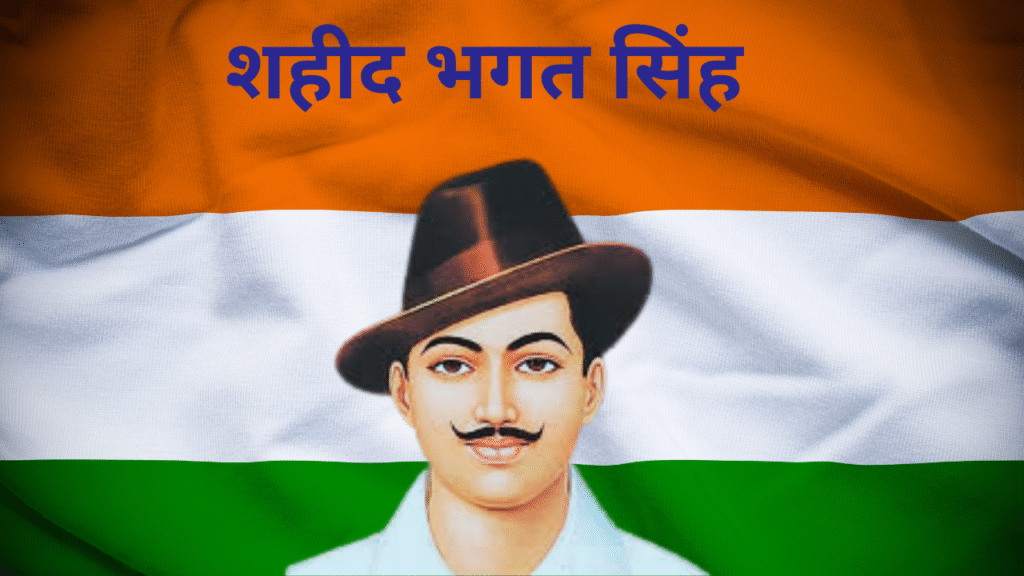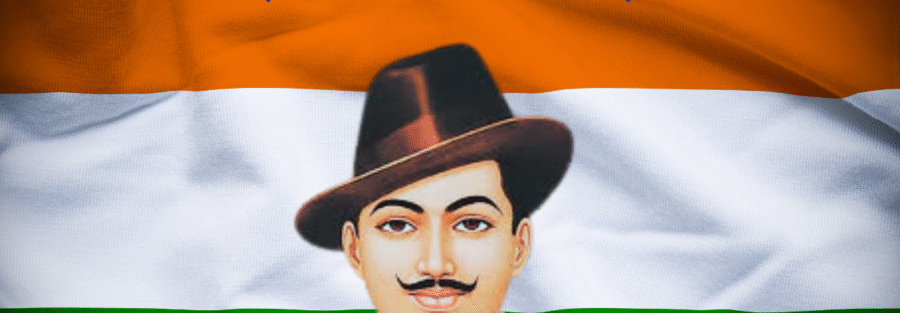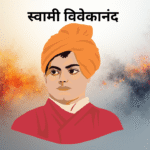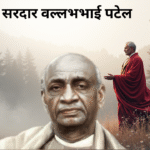
शहीद भगत सिंह: जीवन, संघर्ष और प्रेरणा
प्रस्तावना
भारतीय स्वतंत्रता संग्राम में कई ऐसे वीर और क्रांतिकारी हुए हैं जिन्होंने अपने अद्वितीय साहस और बलिदान से देशवासियों को प्रेरित किया। उनमें शहीद भगत सिंह एक ऐसे क्रांतिकारी थे, जिनका जीवन केवल स्वतंत्रता संग्राम की कहानी नहीं है, बल्कि यह साहस, उच्च विचारधारा और युवाओं के लिए प्रेरणा का प्रतीक बन गया। उनके संघर्ष, बलिदान और विचार आज भी लाखों युवाओं को प्रेरित करते हैं।
भगत सिंह का जीवन यह दर्शाता है कि किसी भी अन्याय के खिलाफ खड़ा होना और अपने आदर्शों के लिए लड़ना ही असली वीरता है। उनके जीवन की प्रत्येक घटना में देशभक्ति की भावना, निडरता और समाज सुधार का संदेश है।
शहीद भगत सिंह प्रारंभिक जीवन
शहीद भगत सिंह का जन्म 28 सितंबर 1907 को पंजाब के लायलपुर जिले के बंगा गाँव (अब पाकिस्तान में) हुआ। उनके पिता का नाम किशन सिंह और माता का नाम विद्यावती कौर था। भगत सिंह का परिवार स्वतंत्रता संग्राम से गहरे जुड़े हुए थे। उनके पिता और चाचा अजीत सिंह भारतीय स्वतंत्रता आंदोलन में सक्रिय थे।
भगत सिंह बचपन से ही साहसी और जिज्ञासु प्रवृत्ति के थे। उनके पिता और चाचा से उन्हें देशभक्ति और न्याय का महत्व समझ में आया। उन्होंने अपने बचपन में ही अंग्रेज़ों के अन्याय और अत्याचारों के बारे में सुना और अपने मन में स्वतंत्रता के लिए प्रतिबद्धता पैदा की।
उनकी प्रारंभिक शिक्षा बंगा गांव के स्कूल में हुई। इसके बाद वे लाहौर के दयानंद एंग्लो-वैदिक स्कूल में पढ़ने गए। उन्होंने वहां पढ़ाई के साथ-साथ सामाजिक और राजनीतिक गतिविधियों में रुचि दिखानी शुरू की।
शहीद भगत सिंह शिक्षा और युवावस्था
भगत सिंह ने लाहौर के नेशनल कॉलेज में प्रवेश लिया। यहाँ उन्होंने राजनीतिक विचारों का अध्ययन किया और स्वतंत्रता संग्राम के सिद्धांतों को गहराई से समझा। उन्होंने महात्मा गांधी के अहिंसात्मक आंदोलन को देखा, लेकिन अपने दृष्टिकोण में वे कभी अहिंसा तक सीमित नहीं रहे। उनके विचार अधिक सक्रिय और क्रांतिकारी थे।
उनकी युवावस्था में देश में कई राजनीतिक और सामाजिक घटनाएँ हुईं, जैसे जलियांवाला बाग हत्याकांड (1919) और लाला लाजपत राय की मौत (1928), जिन्होंने उनके मन पर गहरा प्रभाव डाला। इन घटनाओं ने उन्हें यह समझाया कि भारत को स्वतंत्र कराने के लिए साहस और बलिदान की आवश्यकता है।
शहीद भगत सिंह क्रांतिकारी गतिविधियाँ
भगत सिंह ने युवावस्था में ही क्रांतिकारी गतिविधियों में भाग लेना शुरू कर दिया। उन्होंने नौजवान भारत सभा की स्थापना की, जिसका उद्देश्य युवाओं को स्वतंत्रता संग्राम में सक्रिय भागीदारी के लिए प्रेरित करना था।
1928 में, लाला लाजपत राय की हत्या का प्रतिशोध लेने के लिए जॉन सांडर्स की हत्या की योजना बनाई गई। इस घटना ने भारतीय युवाओं को यह संदेश दिया कि अन्याय के खिलाफ खड़े होना आवश्यक है।
1929 में, भगत सिंह और उनके साथी राजगुरु, सुखदेव ने केंद्रीय विधानसभा में बम विस्फोट किया। उन्होंने जानबूझकर ऐसा किया कि किसी को चोट न पहुँचे। इस क्रांतिकारी कदम से ब्रिटिश सरकार को यह संदेश मिला कि भारतीय स्वतंत्रता आंदोलन को दबाया नहीं जा सकता।
शहीद भगत सिंह विचारधारा और लेखन
भगत सिंह केवल एक क्रांतिकारी ही नहीं थे, बल्कि विचारक और लेखक भी थे। उन्होंने कई लेख और पत्रिकाएँ लिखीं, जिनमें समाजवाद, धर्मनिरपेक्षता, मानवता और स्वतंत्रता के महत्व को समझाया गया।
उनके लेखों में स्पष्ट रूप से यह संदेश था कि केवल हथियार या क्रांतिकारी गतिविधियाँ ही पर्याप्त नहीं हैं, बल्कि युवाओं को जागरूक करना और समाज सुधार के विचार फैलाना भी जरूरी है।
भगत सिंह ने ‘विस्व प्रेम’, ‘बालवंत’, ‘रंजीत’ और ‘विद्रोही’ जैसे उपनामों से लेख लिखे। उनका लेखन युवाओं में जागरूकता और देशभक्ति की भावना पैदा करने वाला था।
शहीद भगत सिंह गिरफ्तारी और मुकदमा
केंद्रीय विधानसभा में बम विस्फोट के बाद भगत सिंह को गिरफ्तार कर लिया गया। उन्हें लाहौर षड्यंत्र केस में सांडर्स की हत्या और बम विस्फोट के आरोप में दोषी ठहराया गया।
उनके मुकदमे के दौरान उन्होंने अपने विचारों और उद्देश्यों की स्पष्ट व्याख्या की। उन्होंने अदालत में कहा कि उनका उद्देश्य केवल अंग्रेज़ों को डराना नहीं था, बल्कि भारतीय जनता को अपने अधिकारों के प्रति जागरूक करना था।
शहीद भगत सिंह फांसी और बलिदान
भगत सिंह को 23 मार्च 1931 को फांसी दी गई। उनकी मृत्यु ने पूरे भारत में युवाओं और स्वतंत्रता सेनानियों को प्रेरित किया। उनके अंतिम शब्द “इंकलाब जिंदाबाद” और “साम्राज्यवाद मुर्दाबाद” आज भी स्वतंत्रता आंदोलन के प्रतीक हैं।
भगत सिंह की शहादत ने यह सिद्ध कर दिया कि स्वतंत्रता और न्याय के लिए किसी भी बलिदान से पीछे नहीं हटना चाहिए। उनके जीवन का उद्देश्य केवल खुद की स्वतंत्रता नहीं, बल्कि पूरे देश की स्वतंत्रता और सामाजिक सुधार था।
शहीद भगत सिंह धरोहर और प्रेरणा
भगत सिंह का जीवन युवाओं के लिए प्रेरणा का स्रोत है। उनके विचार आज भी यह सिखाते हैं कि स्वतंत्रता केवल अधिकार नहीं, बल्कि कर्तव्य भी है। उनके बलिदान ने यह साबित किया कि देश और समाज की भलाई के लिए अपने जीवन की आहुति देना एक महान कार्य है।
आज के समय में उनके आदर्श यह संदेश देते हैं कि हमें सामाजिक न्याय, समानता और देशभक्ति के सिद्धांतों का पालन करना चाहिए। उनका जीवन संघर्ष और बलिदान का प्रतीक बन चुका है।
Shaheed Bhagat Singh: Life, Struggle, and Inspiration

Introduction
In the history of India’s freedom struggle, many brave revolutionaries emerged who inspired the nation through their courage and sacrifices. Among them, Shaheed Bhagat Singh stands out as a fearless revolutionary whose life was not only a story of India’s fight for independence but also a symbol of courage, progressive thinking, and inspiration for the youth.
His struggle, sacrifice, and ideology continue to motivate millions of people even today. The life of Bhagat Singh shows that standing against injustice and fighting for one’s principles is the true mark of bravery. Every event in his life conveys patriotism, fearlessness, and the message of social reform.
Early Life
Bhagat Singh was born on 28th September 1907 in Banga village of Lyallpur district (now in Pakistan), Punjab. His father was Kishan Singh, and his mother was Vidyawati Kaur. Bhagat Singh’s family was deeply involved in the freedom struggle, and his uncle, Ajit Singh, was also a revolutionary actively fighting against British colonial rule.
From a young age, Bhagat Singh displayed courage, curiosity, and a keen sense of justice. He inherited the values of patriotism and justice from his family. Even as a child, he was aware of the British atrocities and was determined to contribute to India’s freedom.
He received his early education at the village school in Banga and later attended the Dayanand Anglo-Vedic School in Lahore, where he developed an interest in social and political affairs alongside his academic studies.
Education and Youth
Bhagat Singh enrolled in National College, Lahore, where he studied political theories and closely observed India’s freedom struggle. While Mahatma Gandhi’s non-violent methods influenced many, Bhagat Singh’s approach leaned towards active revolutionary methods.
During his youth, events like the Jallianwala Bagh massacre (1919) and the death of Lala Lajpat Rai (1928) profoundly impacted him. These incidents strengthened his resolve that India could only achieve freedom through courage and sacrifice.
Revolutionary Activities
Bhagat Singh became actively involved in revolutionary activities at a young age. He co-founded the Naujawan Bharat Sabha, an organization aiming to awaken and mobilize Indian youth for the freedom movement.
In 1928, to avenge Lala Lajpat Rai’s death, he participated in the assassination of John Saunders, a British police officer. This act signaled that injustice would not go unchallenged.
In 1929, Bhagat Singh and his associates, including Rajguru and Sukhdev, carried out the bombing of the Central Legislative Assembly. They deliberately ensured that no one was injured. This bold act sent a message to the British government that India’s independence movement could not be suppressed.
Ideology and Writings
Bhagat Singh was not just a revolutionary but also a thinker and writer. He authored numerous essays and articles emphasizing socialism, secularism, humanity, and the importance of freedom.
His writings conveyed that revolutionary acts alone were insufficient; awakening the youth and spreading social awareness was equally essential. He wrote under pseudonyms like Balwant, Ranjit, and Vidrohi. His articles were instrumental in instilling patriotism and consciousness among young Indians.
Arrest and Trial
Following the Central Assembly bombing, Bhagat Singh was arrested and charged in the Lahore Conspiracy Case for the murder of Saunders and the bombing.
During his trial, he clearly articulated his motives, explaining that his goal was not to harm individuals but to awaken Indian citizens about their rights and the necessity of fighting against colonial oppression.
Execution and Sacrifice
Bhagat Singh was executed on 23rd March 1931. His martyrdom inspired countless Indians to join the freedom struggle. His last words, “Inquilab Zindabad” (Long live the revolution) and “Down with Imperialism”, remain iconic symbols of India’s independence movement.
His sacrifice demonstrated that one should never retreat from the fight for freedom and justice. Bhagat Singh’s life was dedicated not merely to his personal liberty but to the freedom of the entire nation and social reform.
Legacy and Inspiration
Bhagat Singh’s life continues to inspire youth. His ideals teach that freedom is not only a right but also a responsibility. His sacrifice proved that offering one’s life for the nation’s welfare is a noble act.
Even today, his legacy encourages people to uphold justice, equality, and patriotism. He remains a symbol of courage, determination, and ultimate sacrifice for the country.



